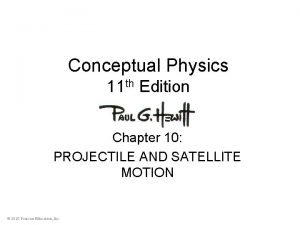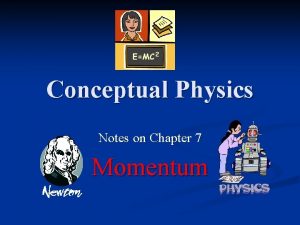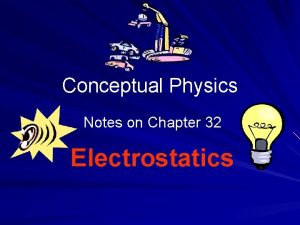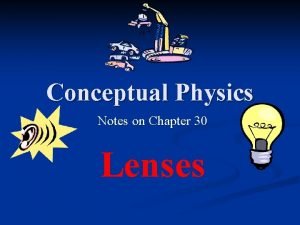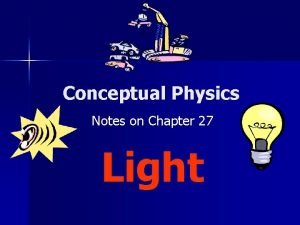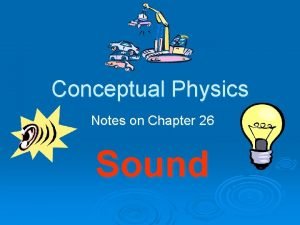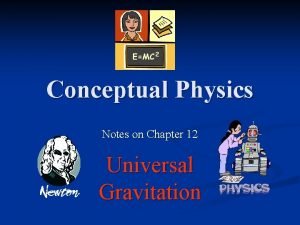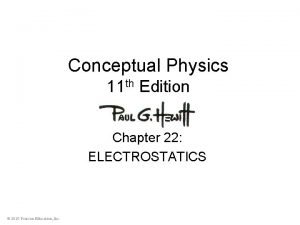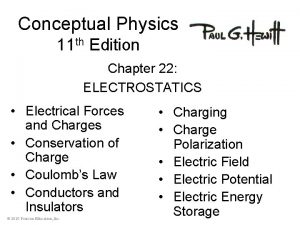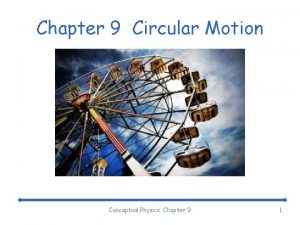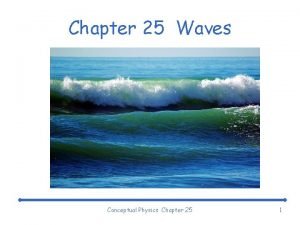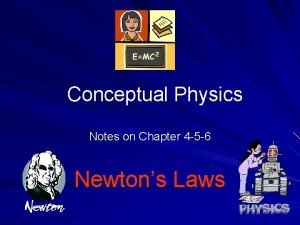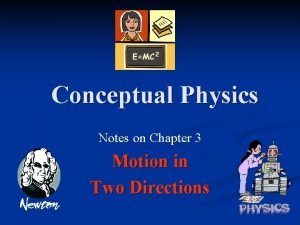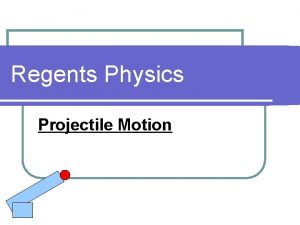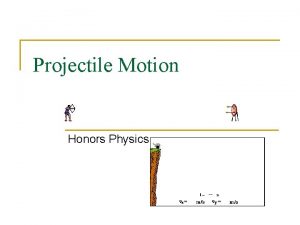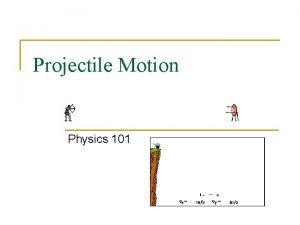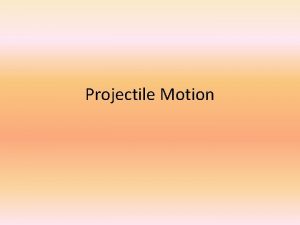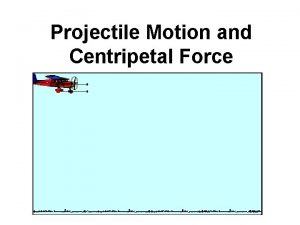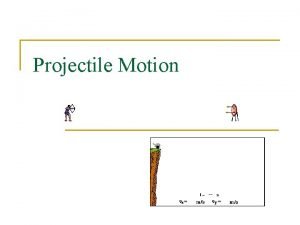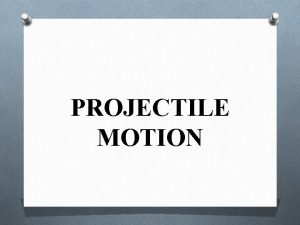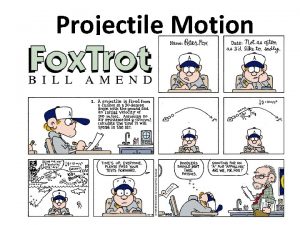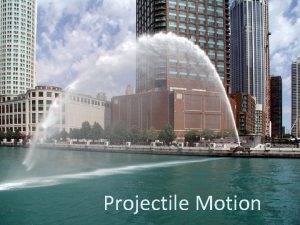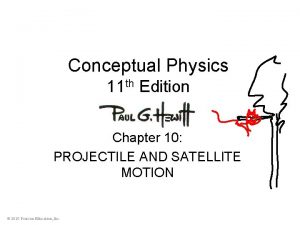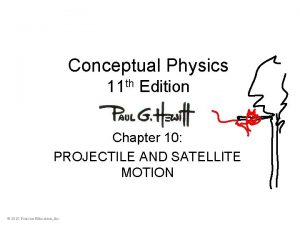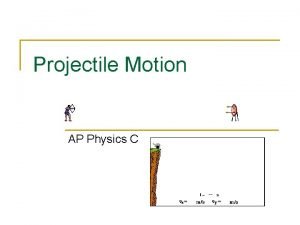Conceptual Physics 11 th Edition Chapter 10 PROJECTILE



















- Slides: 19

Conceptual Physics 11 th Edition Chapter 10: PROJECTILE AND SATELLITE MOTION © 2010 Pearson Education, Inc.

This lecture will help you understand: • • Projectile Motion Fast-Moving Projectiles – Satellites Circular Satellite Orbits Elliptical Orbits Kepler’s Laws of Planetary Motion Energy Conservation and Satellite Motion Escape Speed © 2010 Pearson Education, Inc.

Projectile Motion • Without gravity, a tossed object follows a straight -line path. • With gravity, the same object tossed at an angle follows a curved path. Projectile: • Any object that moves through the air or space under the influence of gravity, continuing in motion by its own inertia © 2010 Pearson Education, Inc.

Projectile Motion Projectile motion is a combination of • a horizontal component, and • a vertical component. © 2010 Pearson Education, Inc.

Projectile Motion Projectiles launched horizontally Important points: Horizontal component of velocity doesn’t change (when air drag is negligible). • Ball travels the same horizontal distance in equal times (no component of gravitational force acting horizontally). • Remains constant. © 2010 Pearson Education, Inc.

Projectile Motion • Vertical positions become farther apart with time. – Gravity acts downward, so ball accelerates downward. • Curvature of path is the combination of horizontal and vertical components of motion. © 2010 Pearson Education, Inc.

Projectile Motion Parabola: • Curved path of a projectile that undergoes acceleration only in the vertical direction, while moving horizontally at a constant speed © 2010 Pearson Education, Inc.

Projectile Motion Projectiles launched at an angle: • Paths of stone thrown at an angle upward and downward – Vertical and horizontal components are independent of each other. © 2010 Pearson Education, Inc.

Projectile Motion • Paths of a cannonball shot at an upward angle – Vertical distance that a stone falls is the same vertical distance it would have fallen if it had been dropped from rest and been falling for the same amount of time (5 t 2). © 2010 Pearson Education, Inc.

Projectile Motion • Paths of projectile following a parabolic trajectory – Horizontal component along trajectory remains unchanged. – Only vertical component changes. – Velocity at any point is computed with the Pythagorean theorem (diagonal of rectangle). © 2010 Pearson Education, Inc.

Projectile Motion • Different horizontal distances – Same range is obtained from two different launching angles when the angles add up to 90°. • Object thrown at an angle of 60 has the same range as if it were thrown at an angle of 30. © 2010 Pearson Education, Inc.

Projectile Motion Different horizontal distances (continued) – Maximum range occurs for ideal launch at 45. – With air resistance, the maximum range occurs for a baseball batted at less than 45 above the horizontal. – With air resistance the maximum range occurs when a golf ball is hit at an angle less than 38. © 2010 Pearson Education, Inc.

Projectile Motion Without air resistance, the time for a projectile to reach maximum height is the same as the time for it to return to its initial level. © 2010 Pearson Education, Inc.

Projectile Motion CHECK YOUR NEIGHBOR The velocity of a typical projectile can be represented by horizontal and vertical components. Assuming negligible air resistance, the horizontal component along the path of the projectile A. B. C. D. increases. decreases. remains the same. Not enough information. © 2010 Pearson Education, Inc.

Projectile Motion CHECK YOUR ANSWER The velocity of a typical projectile can be represented by horizontal and vertical components. Assuming negligible air resistance, the horizontal component along the path of the projectile A. B. C. D. increases. decreases. remains the same. Not enough information. Explanation: Since there is no force horizontally, no horizontal acceleration occurs. © 2010 Pearson Education, Inc.

Projectile Motion CHECK YOUR NEIGHBOR When no air resistance acts on a fast-moving baseball, its acceleration is A. B. downward, g. a combination of constant horizontal motion and accelerated downward motion. C. opposite to the force of gravity. D. centripetal. © 2010 Pearson Education, Inc.

Projectile Motion CHECK YOUR ANSWER When no air resistance acts on a fast-moving baseball, its acceleration is A. B. downward, g. a combination of constant horizontal motion and accelerated downward motion. C. opposite to the force of gravity. D. centripetal. © 2010 Pearson Education, Inc.

Projectile Motion CHECK YOUR NEIGHBOR Neglecting air drag, a ball tossed at an angle of 30 with the horizontal will go as far downrange as one that is tossed at the same speed at an angle of A. B. C. D. 45. 60. 75. None of the above. © 2010 Pearson Education, Inc.

Projectile Motion CHECK YOUR ANSWER Neglecting air drag, a ball tossed at an angle of 30 with the horizontal will go as far downrange as one that is tossed at the same speed at an angle of A. B. C. D. 45. 60. 75. None of the above. Explanation: Same initial-speed projectiles have the same range when their launching angles add up to 90. Why this is true involves a bit of trigonometry—which, in the interest of time, we’ll not pursue here. © 2010 Pearson Education, Inc.
 Chapter 10 projectile and satellite motion
Chapter 10 projectile and satellite motion University physics with modern physics fifteenth edition
University physics with modern physics fifteenth edition Chapter 8 energy conceptual physics
Chapter 8 energy conceptual physics Conceptual physics chapter 7 momentum answers
Conceptual physics chapter 7 momentum answers Conceptual physics chapter 35
Conceptual physics chapter 35 Chapter 33 conceptual physics
Chapter 33 conceptual physics Conceptual physics electrostatics
Conceptual physics electrostatics Chapter 30 lenses
Chapter 30 lenses Conceptual physics chapter 27 light pdf
Conceptual physics chapter 27 light pdf Conceptual physics chapter 26
Conceptual physics chapter 26 Conceptual physics chapter 21
Conceptual physics chapter 21 Conceptual physics chapter 13 universal gravitation
Conceptual physics chapter 13 universal gravitation Conceptual physics chapter 6 momentum
Conceptual physics chapter 6 momentum Conceptual physics electrostatics
Conceptual physics electrostatics Conceptual physics chapter 22 electrostatics
Conceptual physics chapter 22 electrostatics Chapter 9 circular motion answers
Chapter 9 circular motion answers Vibrations and waves concept development 25-1
Vibrations and waves concept development 25-1 Conceptual physics chapter 23 electric current
Conceptual physics chapter 23 electric current Conceptual physics notes
Conceptual physics notes Conceptual physics chapter 3
Conceptual physics chapter 3
